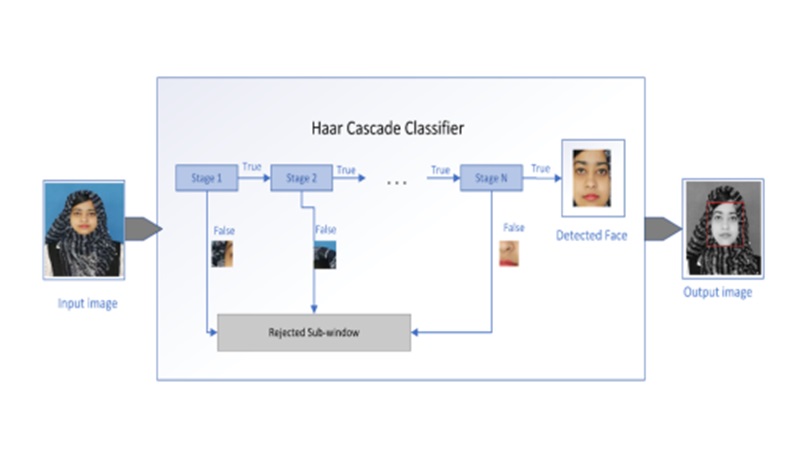A Comparative Analysis of Emotion Detection Techniques

DOI:
https://doi.org/10.54060/jieee.2023.98Keywords:
Haar Cascade Classifiers, Emotion detection, CNN, Random Forest, Magnetic Resonance Imaging; Deep Residual Network (RESNET); glioma tumor; meningioma tumor;pituitary tumor; Deep Learning.Abstract
Emotion recognition from facial expressions has become an urgent necessity due to its numerous applications in artificial intelligence, such as human-computer interface, marketing, mental health screening, and sentiment analysis, to name a few areas where emotion detection has become essential. In this paper we present a compara-tive analysis that offers insightful information about two techniques in emotion detection with CK+ and FER2013 datasets in deep learning, assisting researchers, practitioners, and policymakers in making defensible decisions about the selection and application of different methods in diverse applications. It emphasizes how important it is to continue researching and developing in the field of emotion detection in order to make it more reliable, accurate, and equitable in a variety of real-world situations. We focused on the two emotion detection techniques and databases employed, and the contributions that were dealt with. The Cascade Classifier algorithm and the Random Forest technique are thoroughly compared in this research to provide light on their advantages, disadvantages, and suitability for use in various fields. Additionally, the study evaluates the performance of both the Cascade Classifier and Random Forest algorithm on FER2013 and CK+ datasets, considering metrics such as accuracy, precision, f1-score, etc. Finally, the assessment of these methods incorporating the review measures is reported and discussed.
Downloads
References
T. U. Ahmed, S. Hossain, M. S. Hossain, R. ul Islam, and K. Andersson, “Facial expression recognition using convolutional neural network with data augmentation,” in 2019 Joint 8th International Conference on Informatics, Electronics & Vision (ICIEV) and 2019 3rd International Conference on Imaging, Vision & Pattern Recognition (icIVPR), 2019. doi:10.1109/iciev.2019.8858529.
J. Guo, “Deep learning approach to text analysis for human emotion detection from big data,” J. Intell. Syst., vol. 31, no. 1, pp. 113–126, 2022. doi: 10.1515/jisys-2022-0001.
Dr. N. Shelke, Dr. S. Upadhye, Prof. S. S. Uparkar, H. Bawane, D. Shivvanshi, and S. Kosekar, “APPROACHES FOR HARVESTING ON EMOTION EXTRACTION FROM HUMAN FACIAL EXPRESSIONS,” Indian Journal of Computer Science and En-gineering, vol. 12, no. 4, pp. 921–944, 2021. doi: 10.21817/indjcse/2021/v12i4/211204159.
P. Tarnowski, M. Kołodziej, A. Majkowski, and R. J. Rak, “Eye-tracking analysis for emotion recognition,” Comput. Intell. Neurosci., vol. 2020, p. 2909267, 2020. doi: 10.1155/2020/2909267.
P. S. Reddi and A. S. Krishna, “CNN Implementing Transfer Learning for Facial Emotion Recognition, "Int,” Int. J. Intell. Syst. Appl. Eng, vol. 11, no. 4s, pp. 35–45, 2023.
C. Orrite, A. Gañán, and G. Rogez, “HOG-based decision tree for facial expression classification,” in Pattern Recognition and Image Analysis, Berlin, Heidelberg: Springer Berlin Heidelberg, 2009, pp. 176–183. doi: https://doi.org/10.1007/978-3-642-02172-5_24.
M. Murugappan et al., “Facial expression classification using KNN and decision tree classifiers,” in 2020 4th International Conference on Computer, Communication and Signal Processing (ICCCSP), 2020. doi: 10.1109/ICCCSP49186.2020.9315234.
A. L. Cîrneanu, D. Popescu, and D. Iordache, “New Trends in Emotion Recognition Using Image Analysis by Neural Net-works, a Systematic Review,” Sensors, vol. 23, no. 16, p. 7092, Aug. 2023, doi: 10.3390/s23167092.
I. Talegaonkar, K. Joshi, S. Valunj, R. Kohok, and A. Kulkarni, “Real time facial expression recognition using deep learn-ing,” SSRN Electron. J., 2019. doi:https://doi.org/10.2139/ssrn.3421486.
A. S. Ahmad, R. Hassan, N. H. Zakaria, and S. H. Moi, "Comparative studies of facial emotion detection in online learning," in AIP Conference Proceedings, vol. 2827, no. 1. AIP Publishing, 2023, doi: https://doi.org/10.1063/5.0164746.
A. John, A. Mc, A. S. Ajayan, S. Sanoop, and V. R. Kumar, “Real-time facial emotion recognition system with improved pre-processing and feature extraction,” in 2020 Third International Conference on Smart Systems and Inventive Technology (ICSSIT), 2020. doi: 10.1109/ICSSIT48917.2020.9214207.
R. Guo and P. Shakarian, "A comparison of methods for cascade prediction," 2016 IEEE/ACM International Conference on Advances in Social Networks Analysis and Mining (ASONAM),” San Francisco, CA, USA, pp. 591-598, 2016 doi: 10.1109/ASONAM.2016.7752296.
R. E. Cheikh, H. Tran, I. Falih, and E. M. Nguifo, "A comparative study of emotion recognition methods using facial expres-sions," arXiv preprint arXiv:2212.03102, 2022, doi: https://doi.org/10.48550/arXiv.2212.03102
X. Sun, M. Lv, C. Quan, and F. Ren, “Improved facial expression recognition method based on ROI deep convolutional neural network,” in Seventh International Conference on Affective Computing and Intelligent Interaction (ACII), San Antonio, TX, USA, 2017, pp. 256–261. doi: 10.1109/ACII.2017.8273609.
P. Ekman and W. V. Friesen, "Facial action coding system," Environmental Psychology & Nonverbal Behavior, 1978, doi: https://doi.org/10.1037/t27734-000
P. Lucey, J. F. Cohn, T. Kanade, J. Saragih, Z. Ambadar, and I. Matthews, “The Extended Cohn-Kanade Dataset (CK+): A complete dataset for action unit and emotion-specified expression,” in 2010 IEEE Computer Society Conference on Com-puter Vision and Pattern Recognition - Workshops, 2010.
S. Minaee, M. Minaei, and A. Abdolrashidi, “Deep-emotion: Facial expression recognition using attentional convolutional network,” Sensors (Basel), vol. 21, no. 9, 2021. doi: 10.3390/s21093046.
C. Ilyas, R. Nunes, K. Nasrollahi, M. Rehm, and T. Moeslund, “Deep emotion recognition through upper body movements and facial expression,” in Proceedings of the 16th International Joint Conference on Computer Vision, Imaging and Computer Graphics Theory and Applications, 2021.
P. Viola and M. Jones, “Rapid object detection using a boosted cascade of simple features,” in Proceedings of the 2001 IEEE Computer Society Conference on Computer Vision and Pattern Recognition. CVPR 2001, 2005.
P. Viola and M. J. Jones, “Robust Real-Time Face Detection,” International Journal of Computer Vision, vol. 57, no. 2, pp. 137–154, May 2004, doi: 10.1023/b:visi.0000013087.49260.fb.
C. H. Choi, J. Kim, J. Hyun, Y. Kim, and B. Moon, “Face detection using haar cascade classifiers based on vertical compo-nent calibration,” Human-centric Computing and Information Sciences, no. 11, 2022.
M. G. Krishna and A. Srinivasulu, “Face detection system on AdaBoost algorithm using Haar classifiers,” International Journal of Modern Engineering Research, vol. 2, no. 5, pp. 3556–3560, 2012.
A. Dhar and B. N. Shaikh Mohammad, “Emotion Recognition with Music using Facial Feature Extraction and Deep Learn-ing,” SSRN Electronic Journal, 2020, Published, doi: 10.2139/ssrn.3560840.
A. M. Mutawa and A. Hassouneh, “Multimodal Real-Time Patient Emotion Recognition System Using Facial Expressions and Brain Eeg Signals Based on Machine Learning and Log-Sync Methods,” SSRN Electronic Journal, 2022, Published, doi: 10.2139/ssrn.4180761.
D. Kim, J. Hyun, and B. Moon, “Memory-efficient architecture for contrast enhancement and integral image computation,” in 2020 International Conference on Electronics, Information, and Communication (ICEIC), 2020.
Y. Wang, Y. Li, Y. Song, and X. Rong, “Facial Expression Recognition Based on Random Forest and Convolutional Neural Network,” Information, vol. 10, no. 12, p. 375, Nov. 2019, doi: 10.3390/info10120375.
J. R. Quinlan, “Induction of decision trees,” Machine Learning, vol. 1, no. 1, pp. 81–106, Mar. 1986, doi: 10.1007/bf00116251.
A. Baffour, J. Guo, and G. Kusi, Depth-wise Separable Convolution for Real-time Facial Expression Recognition.
Z.-Y. Huang, C.-C. Chiang, J.-H. Chen, Y.-C. Chen, H.-L. Chung, Y.-P. Cai, and H.-C. Hsu, "A Study on Computer Vision for Facial Emotion Recognition, "Scientific Reports, vol. 13, no. 1, pp. 8425, 2023.
A.-L. Cîrneanu, D. Popescu, and D. Iordache, “New Trends in Emotion Recognition Using Image Analysis by Neural Net-works, a Systematic Review,” Sensors, vol. 23, no. 16, p. 7092, Aug. 2023, doi: 10.3390/s23167092.
C. P. Udeh, L. Chen, S. Du, M. Li, and M. Wu, “Multimodal Facial Emotion Recognition Using Improved Convolution Neural Networks Model,” Journal of Advanced Computational Intelligence and Intelligent Informatics, vol. 27, no. 4, pp. 710–719, Jul. 2023, doi: 10.20965/jaciii.2023.p0710.
S. Gupta, P. Kumar, and R. K. Tekchandani, “Facial emotion recognition based real-time learner engagement detection system in online learning context using deep learning models,” Multimedia Tools and Applications, vol. 82, no. 8, pp. 11365–11394, Sep. 2022, doi: 10.1007/s11042-022-13558-9.
P. S. Reddi and A. S. Krishna, "CNN Implementing Transfer Learning for Facial Emotion Recognition, "Int. J. Intell. Syst. Appl. Eng., vol. 11, no. 4s, pp. 35-45, 2023.
F. Bandar Alharby, “An Intelligent Model for Online Recruitment Fraud Detection,” Journal of Information Security, vol. 10, pp. 155–176, 2019. 10.4236/jis.2019.103009.

Downloads
Published
How to Cite
CITATION COUNT
Issue
Section
Categories
License
Copyright (c) 2023 Abubakar Ali

This work is licensed under a Creative Commons Attribution 4.0 International License.

























